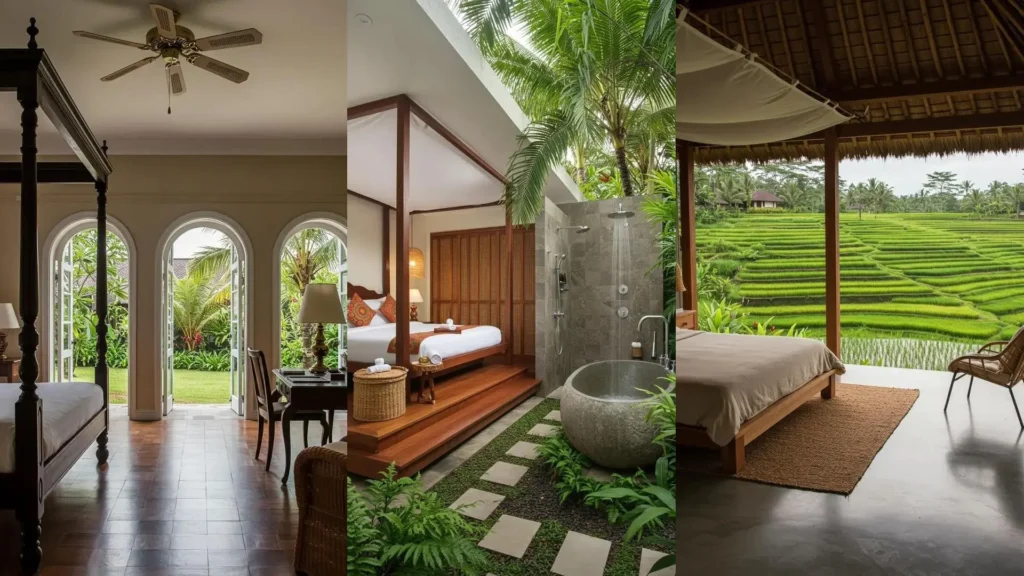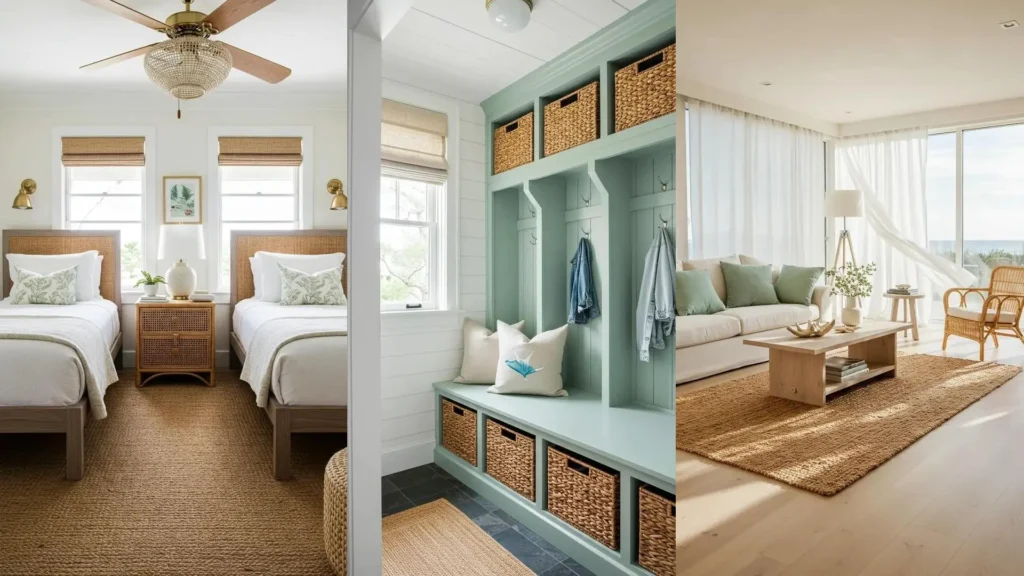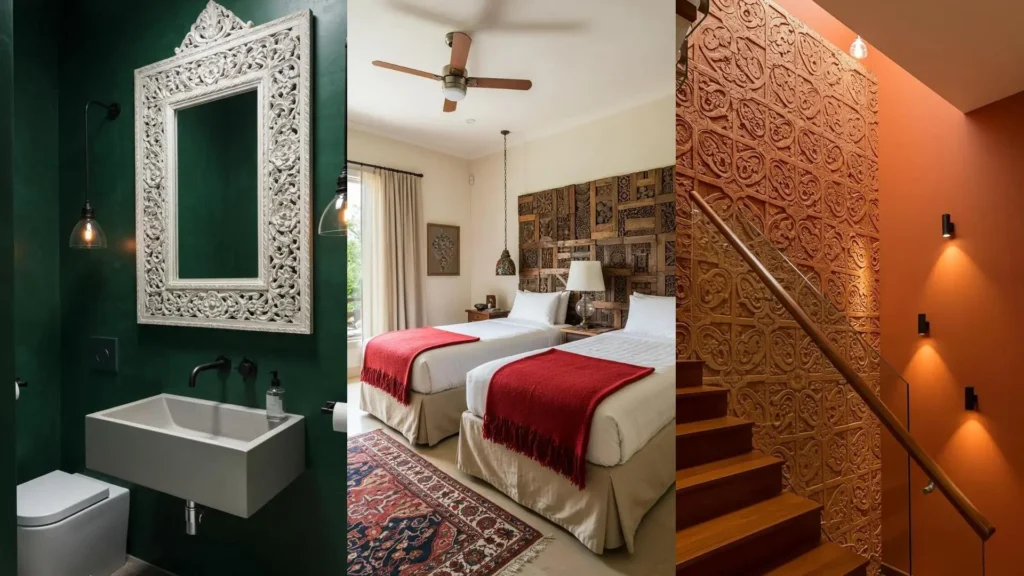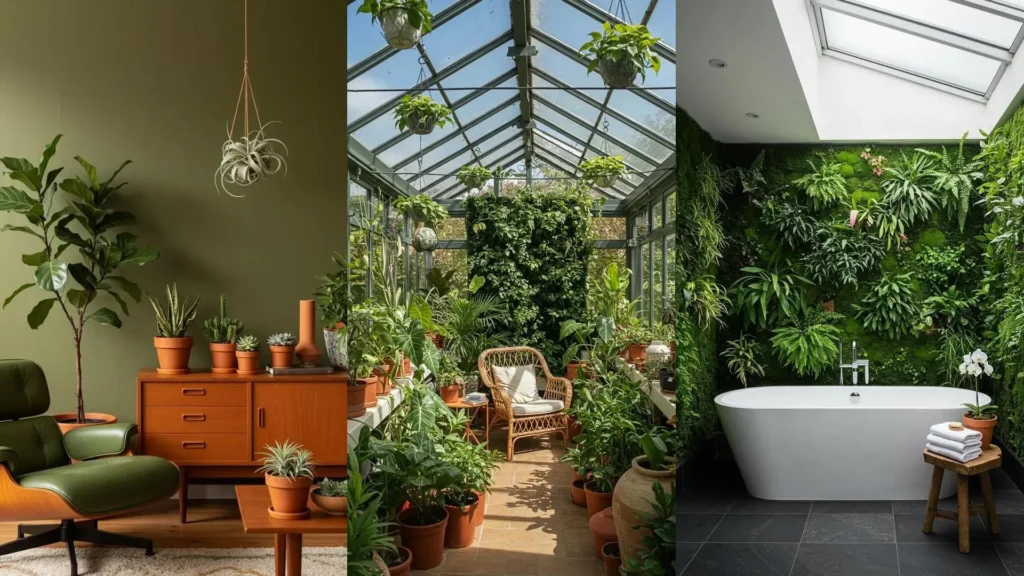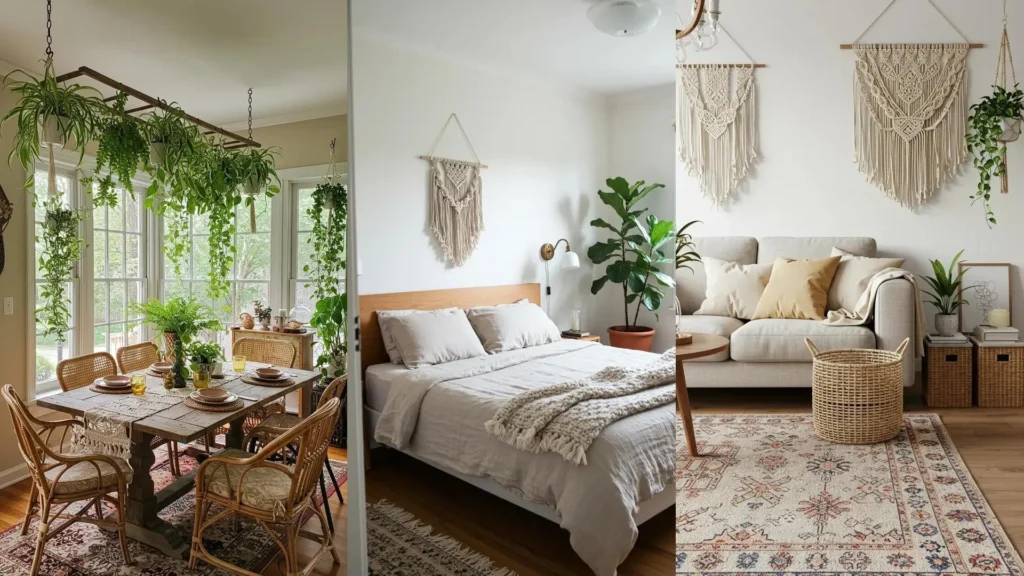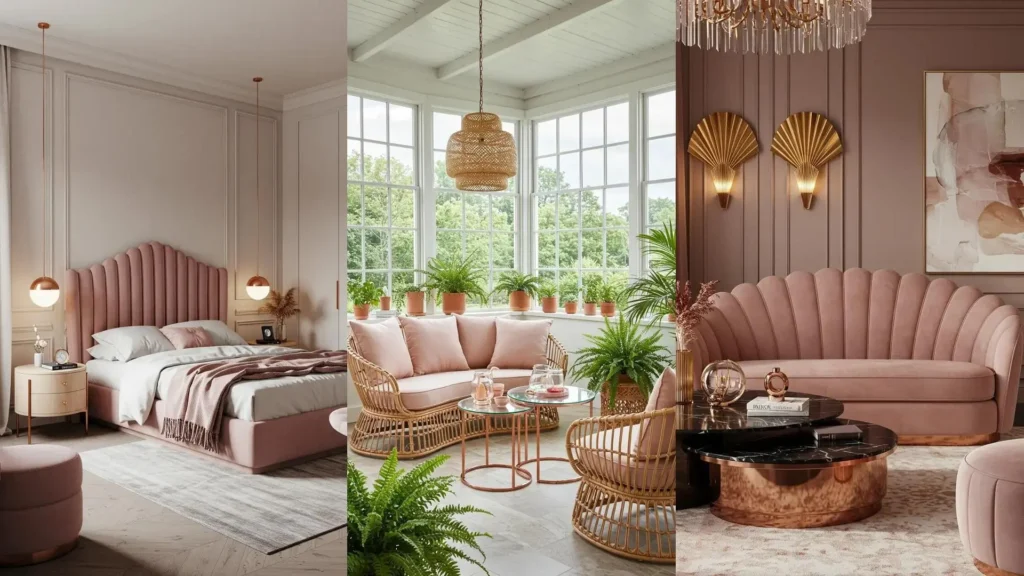There is a unique tranquility that comes from a space that feels both open to the world and deeply personal—a sanctuary that breathes.
Creating that feeling in your own home isn’t about replicating a specific destination, but about capturing its essence: the balance of natural textures, the flow of light, and the quiet invitation to rest.
These ideas are your starting point for weaving that serene, Balinese-inspired spirit into your own rooms. Let’s explore how simple, intentional choices in materials, layout, and light can transform your space into a true retreat.
1. Frame the View with Gauzy Drapery
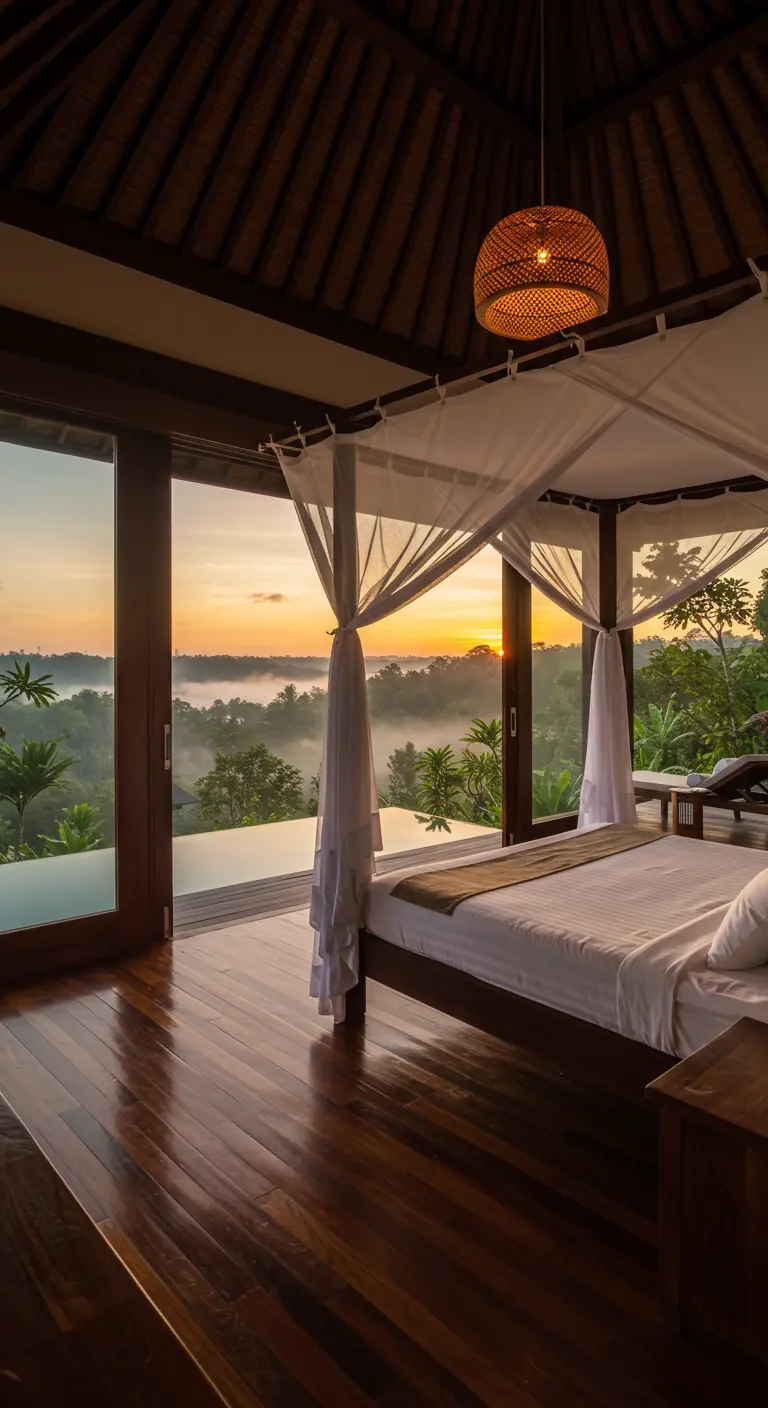
Use your canopy bed not just as a piece of furniture, but as an architectural element that frames the view.
The sheer white fabric softens the transition from the rich, dark wood of the interior to the bright landscape outside.
Opt for a lightweight, almost translucent material that catches the morning light without fully obstructing the scenery.
If you don’t have a canopy bed, you can achieve a similar effect by hanging sheer curtains high and wide around your windows, creating a soft, ethereal boundary that makes the room feel larger and more connected to the outdoors.
2. Unify Indoor and Outdoor Spaces with Material

Create a seamless flow between your bedroom and an adjacent outdoor area by echoing materials across the threshold.
Here, the natural bamboo of the bed frame and the wicker peacock chair directly reference the tropical foliage and textures of the garden shower.
This thoughtful repetition makes two distinct areas feel like a single, cohesive retreat.
Even without an outdoor shower, you can bring this feeling inside by pairing large potted palms with furniture made from natural fibers like rattan, bamboo, or jute.
3. Layer Lighting for Evening Ambiance
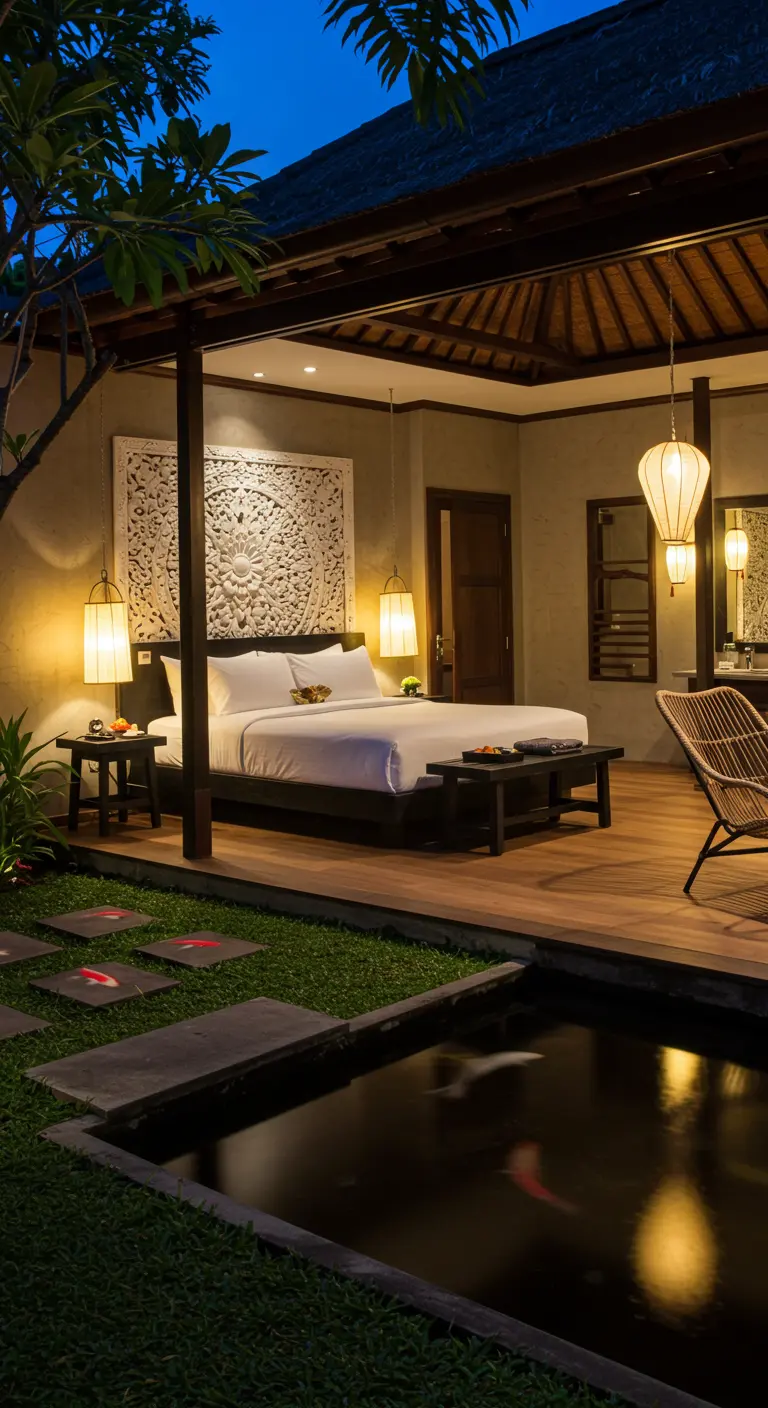
To craft a tranquil evening atmosphere, avoid a single, harsh overhead light and instead layer multiple sources of soft illumination.
In this space, hanging pendants provide gentle ambient light, while bedside lamps offer more focused task lighting.
The reflection of the lights in the koi pond adds a dynamic, shimmering layer that brings the scene to life.
Install dimmers on all fixtures to give you complete control over the mood. For a similar effect without a water feature, place floor lanterns or clusters of candles in front of a large mirror to amplify their warm glow.
4. Embrace Architectural Quirks as Features
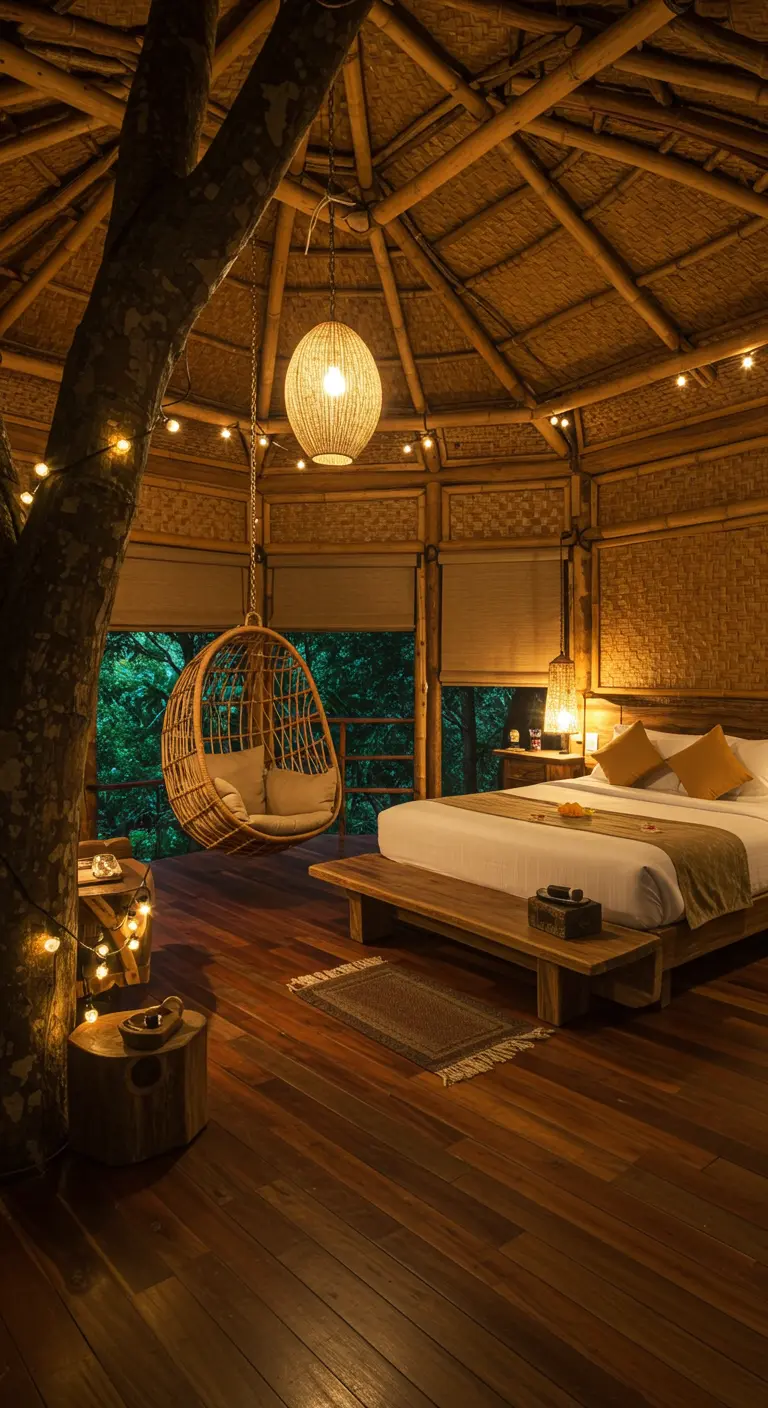
Don’t fight against unusual structural elements in your home—celebrate them as unique features.
This room transforms a central tree trunk from an obstacle into a stunning focal point by wrapping it in delicate string lights.
The room’s circular shape is thoughtfully echoed in the forms of the woven pendant light and the hanging egg chair.
If you have an awkward column or beam, consider painting it a contrasting color or using it to anchor a cozy reading nook.
5. Keep the Interior Simple When the View is Grand

When your room opens up to a spectacular view, the interior design should play a quiet, supporting role.
Employ a restrained color palette and focus on natural textures, like the simple wooden bed frame and the woven jute rug, which ground the space without demanding attention.
The polished concrete floor provides a cool, neutral foundation that allows the vibrant green of the landscape to be the hero.
By avoiding busy patterns and loud colors, you ensure the room remains a calm sanctuary for observation.
6. Anchor the Room with a Masterpiece Furnishing
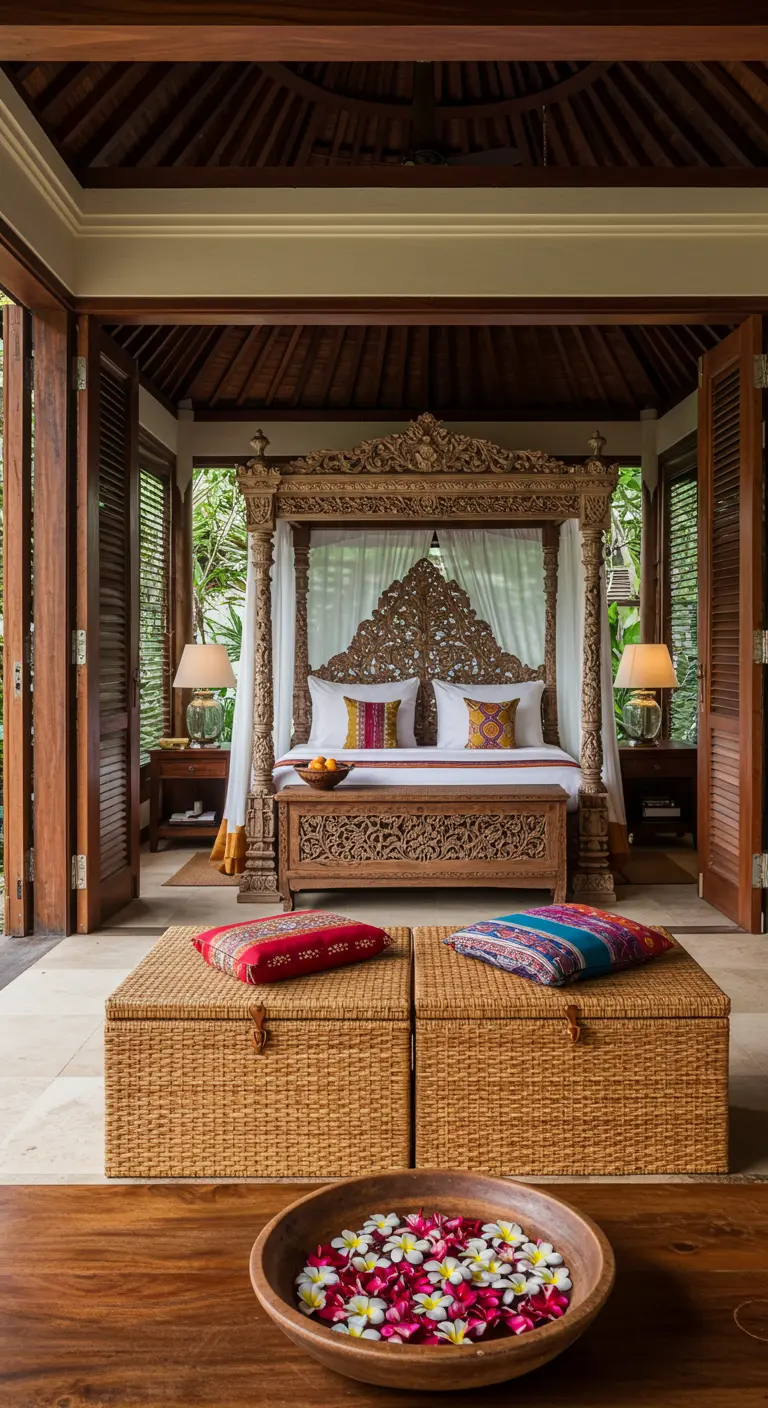
Allow one significant piece of furniture to command the room’s attention and set the design tone.
This intricately carved bed frame is a work of art in itself, establishing a theme of traditional craftsmanship and grandeur.
To prevent such a strong piece from overwhelming the space, balance its visual weight with simpler, textural elements like the woven storage ottomans and neutral stone floors.
You can apply this principle by investing in one heirloom-quality item—a headboard, an armoire, or a console—and building the rest of the room around it.
7. Soften Stone with Warm, Woven Textures

To prevent a room with extensive stone or concrete from feeling cold and uninviting, introduce layers of warm, organic texture.
The tightly woven rattan on the benches provides a crucial tactile counterpoint to the hard, cool gray of the floor and wall tiles.
This careful balance is the key to creating a space that feels both minimalist and welcoming.
Incorporate this idea with jute rugs, linen throw blankets, or other rattan accents to soften hard surfaces and add a layer of comfort.
8. Create an Atmosphere of Magic with Massed Lanterns
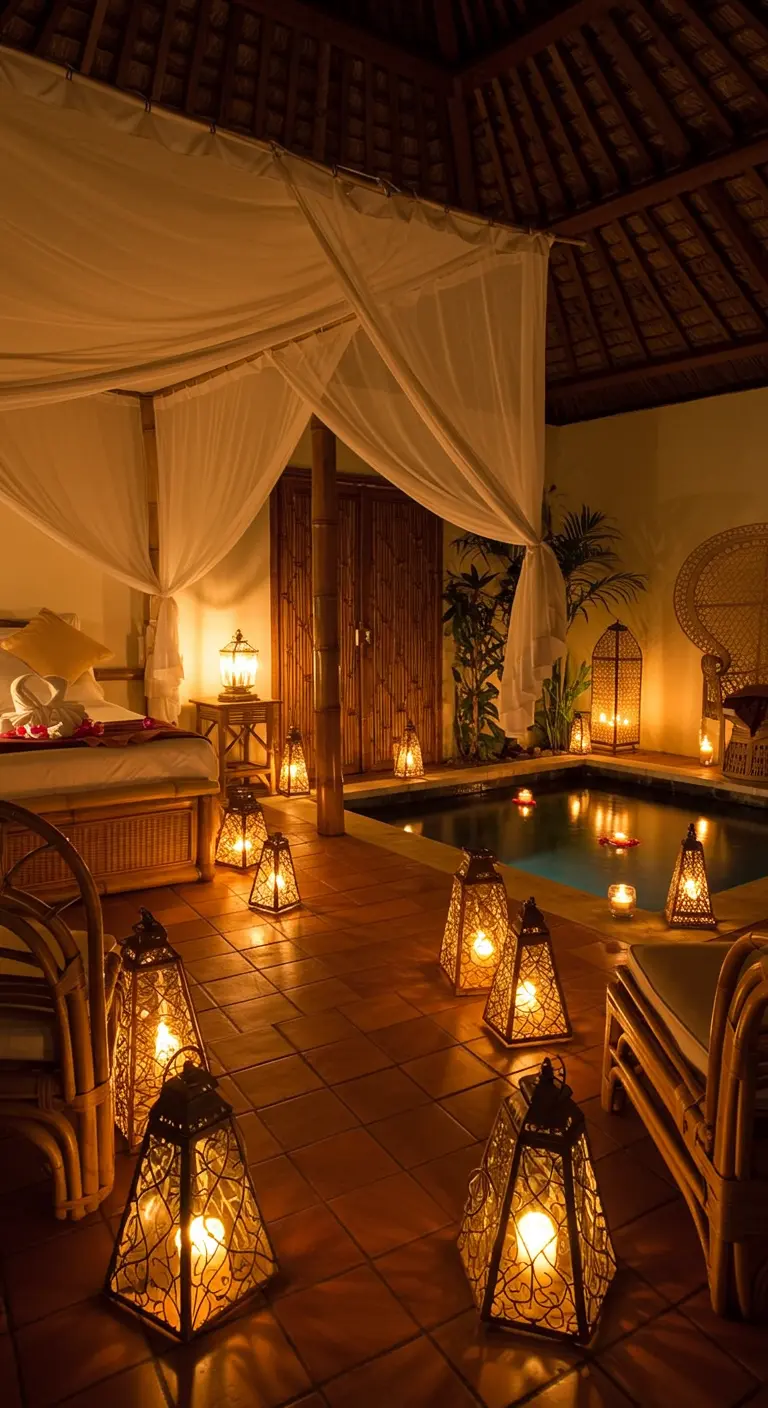
Forgo traditional lamps to create a profoundly romantic and intimate atmosphere by clustering lanterns of various sizes.
The intricate patterns cast by Moroccan-style lanterns create a mesmerizing dance of light and shadow that a standard lamp simply cannot replicate.
For safety and convenience, use high-quality, warm-toned LED candles inside the lanterns.
Group them near the bedside, along the edge of a bathtub, or in a forgotten corner to transform it into a glowing, magical focal point.
9. Orient Your Entire Space Toward the Horizon
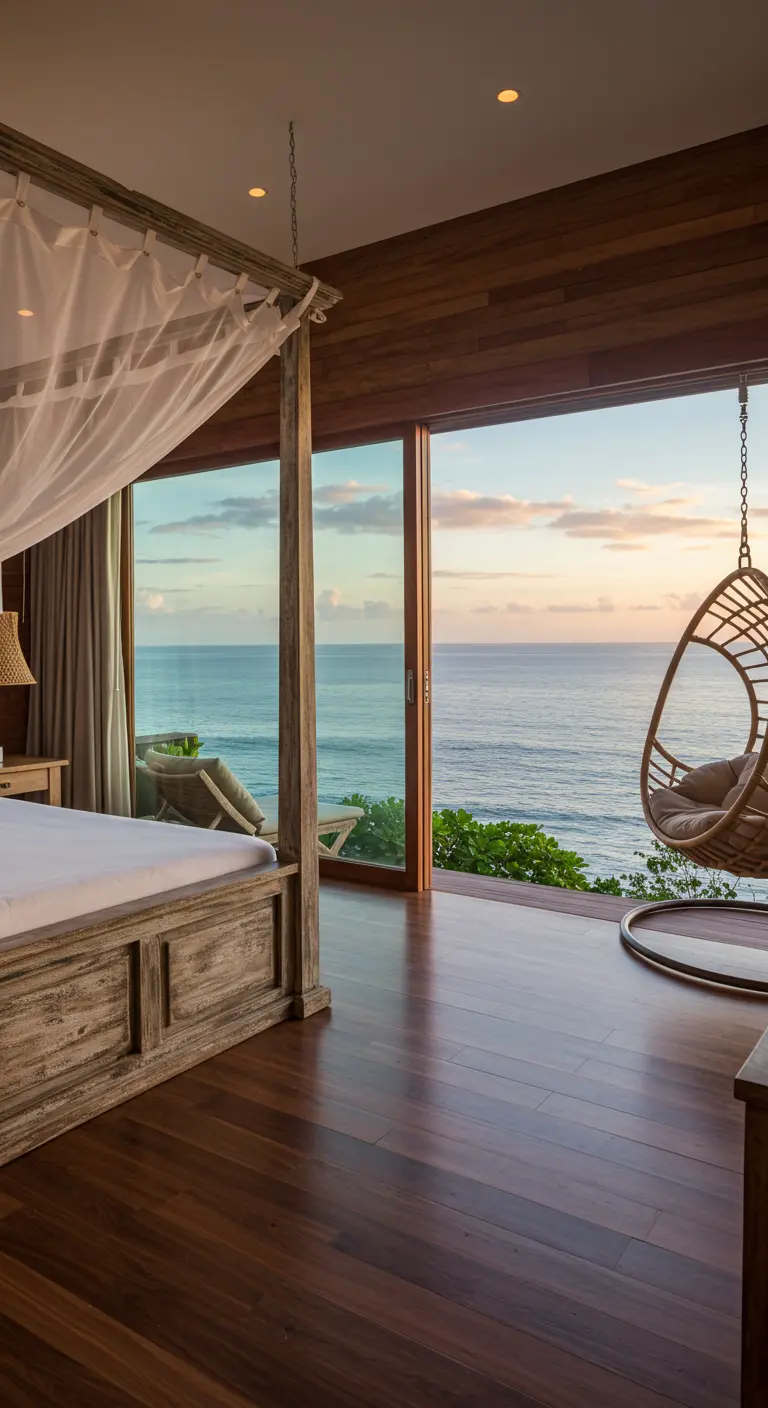
Design your room’s layout to celebrate, not just accommodate, a beautiful view.
Here, both the bed and the hanging chair are intentionally positioned for optimal ocean gazing, turning the simple act of resting into a mindful experience.
If you have a window with a view, resist the common urge to place furniture against that wall.
Instead, pull your seating arrangement into the room and orient it towards the light and scenery, creating a more dynamic and engaging space.
10. Dissolve the Bathroom Wall for a Seamless Retreat
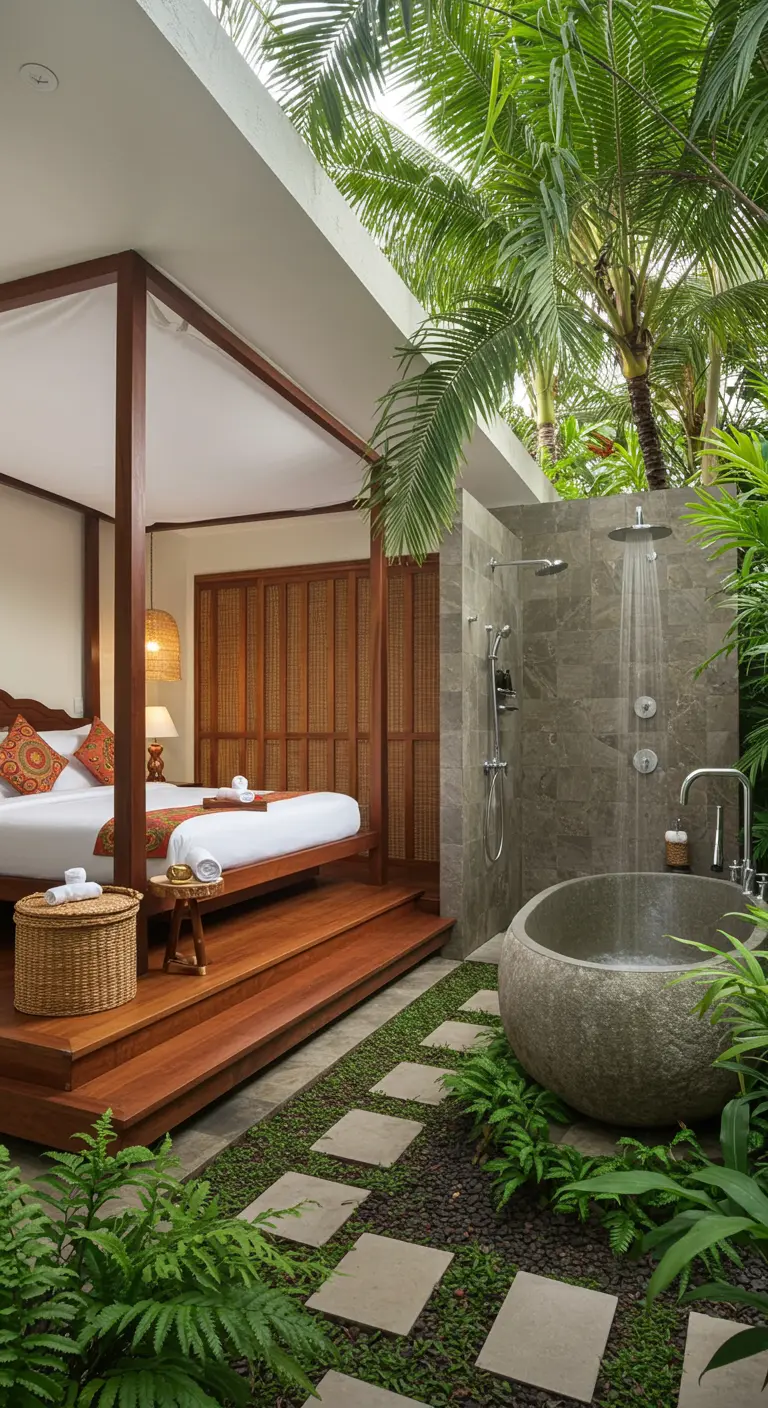
For the ultimate resort-like feel, blur the lines between your sleeping and bathing areas.
Elevating the bed on a wooden platform creates a subtle sense of zoning without the need for walls.
The continuity of materials, such as the stone pavers that lead from the bedroom area directly to the tub, reinforces the connection between the two spaces.
In a more conventional home, you can achieve a similar feeling of openness by installing a freestanding tub in a large primary bedroom or using a seamless glass partition for the shower.
11. Use Architectural Repetition for a Sense of Rhythm
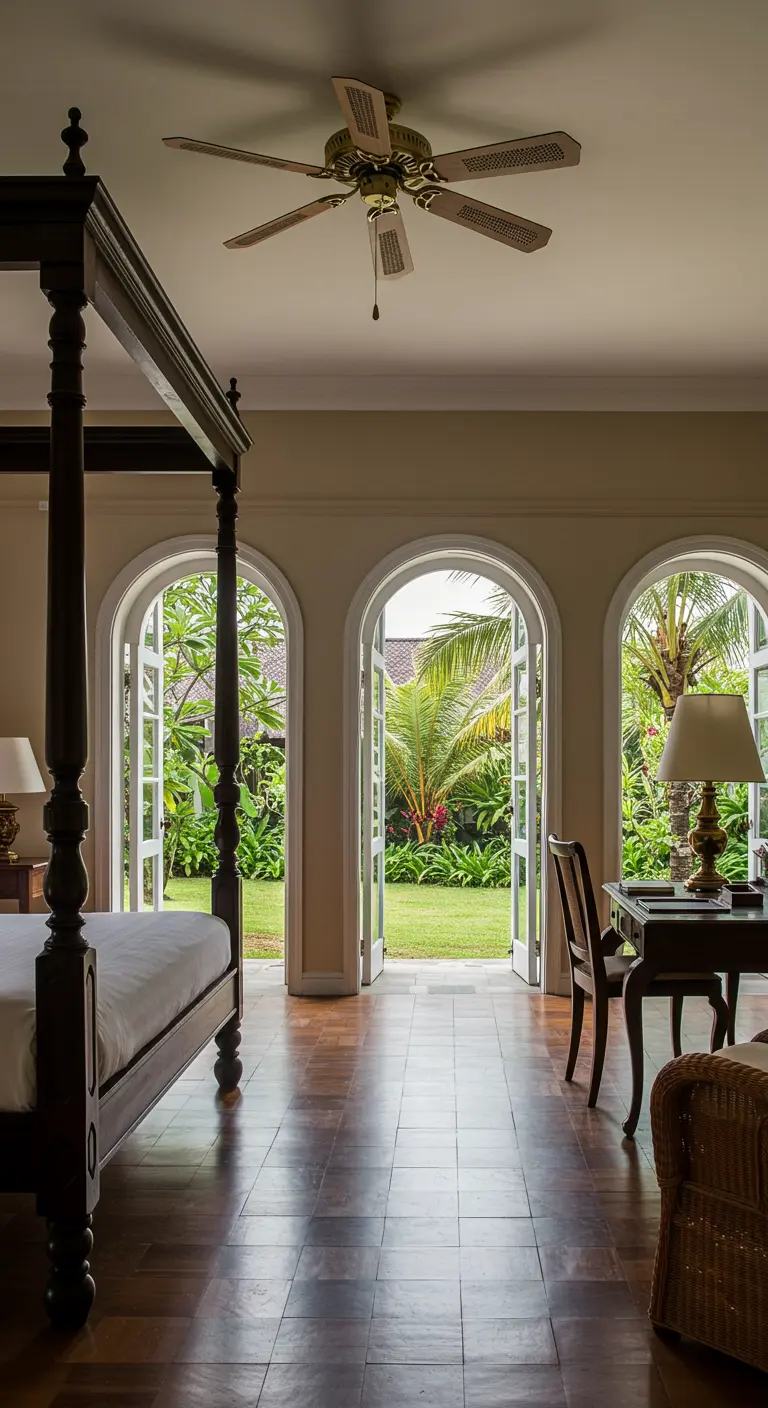
The series of three identical arched doorways creates a powerful sense of rhythm, order, and elegance.
This repetition draws the eye outward, establishing a stately, classical framework that enhances the garden view.
You can replicate this powerful design principle in your own home by hanging a series of matching mirrors, creating a gallery wall with identical frames, or installing evenly spaced wall sconces.
This strategy brings a sense of intention and grandeur to any room.
12. Master the All-White Palette with Rich Texture
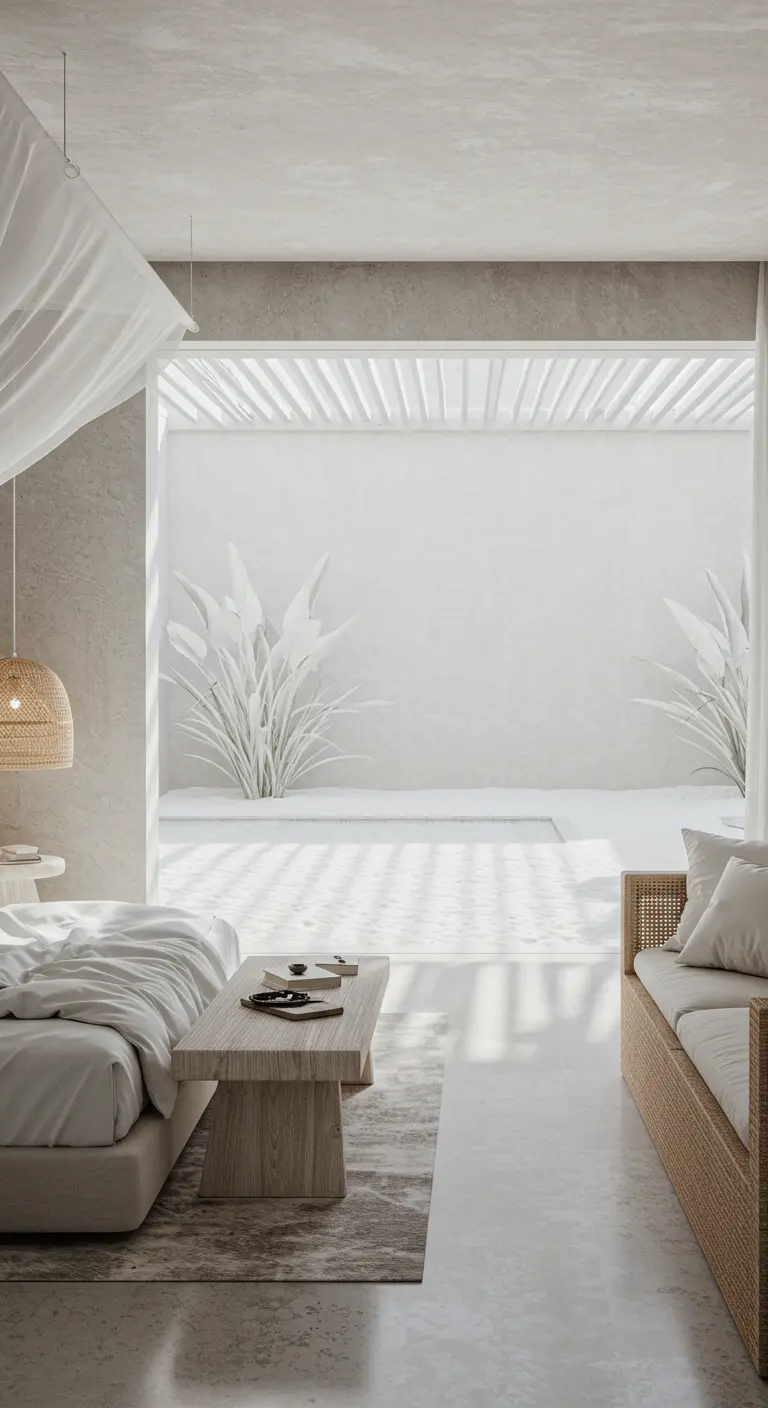
An all-white room can avoid feeling sterile by thoughtfully layering a variety of textures.
Notice how the rough weave of the rattan sofa, the crisp lines of the slatted pergola, the soft crumple of linen bedding, and the smooth floor all reflect light differently.
This creates visual depth and interest without adding a single drop of color.
When working with a monochrome palette, focus on the tactile quality of materials to build a rich sensory experience.
13. Layer Bold Patterns with a Cohesive Color Story

The secret to successfully mixing patterns lies in finding a common thread, usually color.
Here, the vibrant bed runner, assorted pillows, and abstract artwork all share a foundational palette of deep reds, oranges, and blues.
This shared color story allows the different patterns to feel energetic and harmonious rather than chaotic.
To try this, start with a multi-colored textile you love, pull two or three key colors from it, and use those to guide your other accent choices.
14. Ground Your Space with Earthy, Tactile Finishes
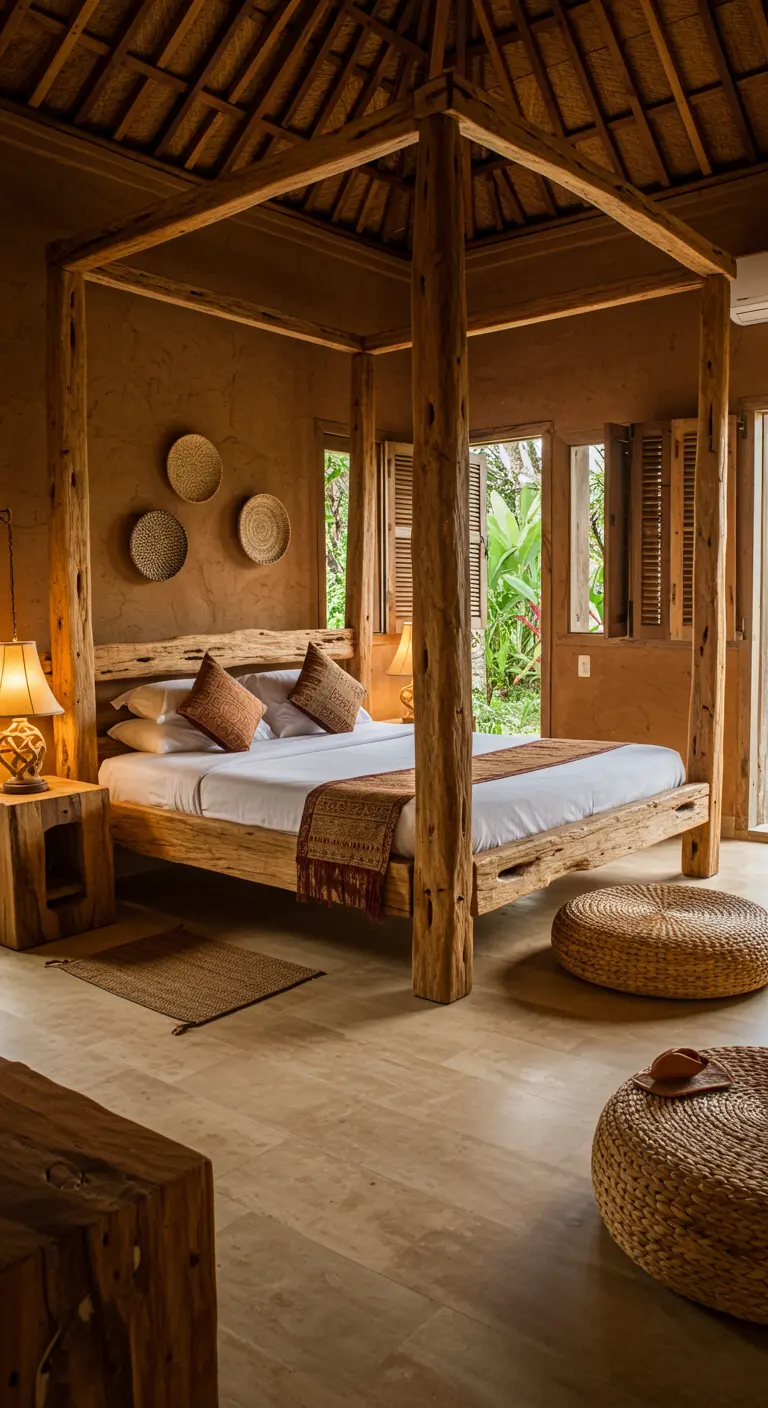
Create a deeply warming and grounding atmosphere by using materials that feel directly connected to the earth.
The textured, terracotta-hued plaster walls, the raw and rustic wood of the bed frame, and the woven grass plates used as wall decor all contribute to this feeling.
This space prioritizes tactile surfaces over slick, polished ones.
Replicate this restorative aesthetic with limewash paint, unbleached linen, raw clay pottery, and jute rugs.
15. Define Functional Zones in an Open Plan with Levels
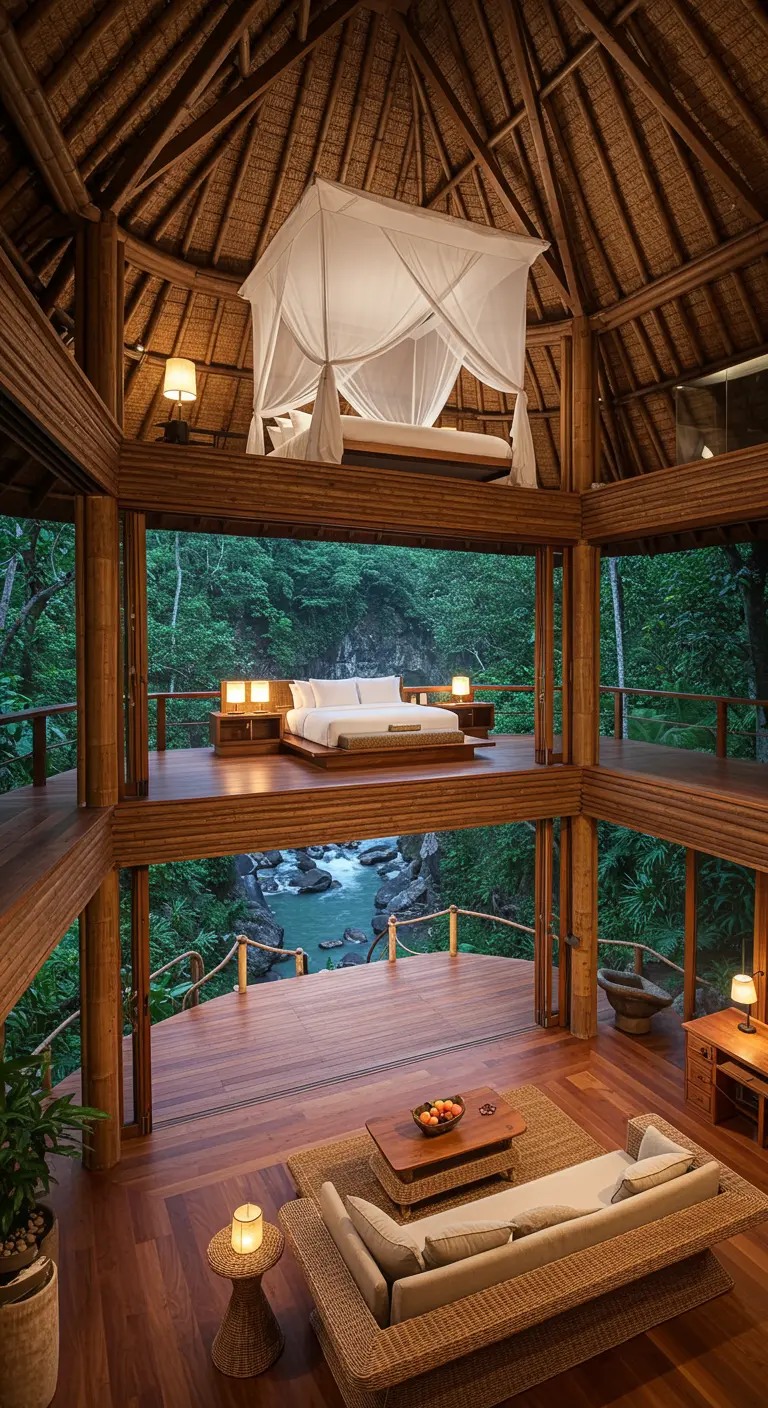
In a large, open-concept space, create distinct functional zones by introducing changes in floor elevation.
This three-tiered design clearly separates the living, sleeping, and lounging areas without using a single wall, making the villa feel both immense and intimate.
In a single-story open-plan home, you can achieve a similar effect by using large area rugs to define seating groups or placing a console table behind a sofa to mark the transition to a different zone.
16. Bring the Garden Up the Walls and Overhead
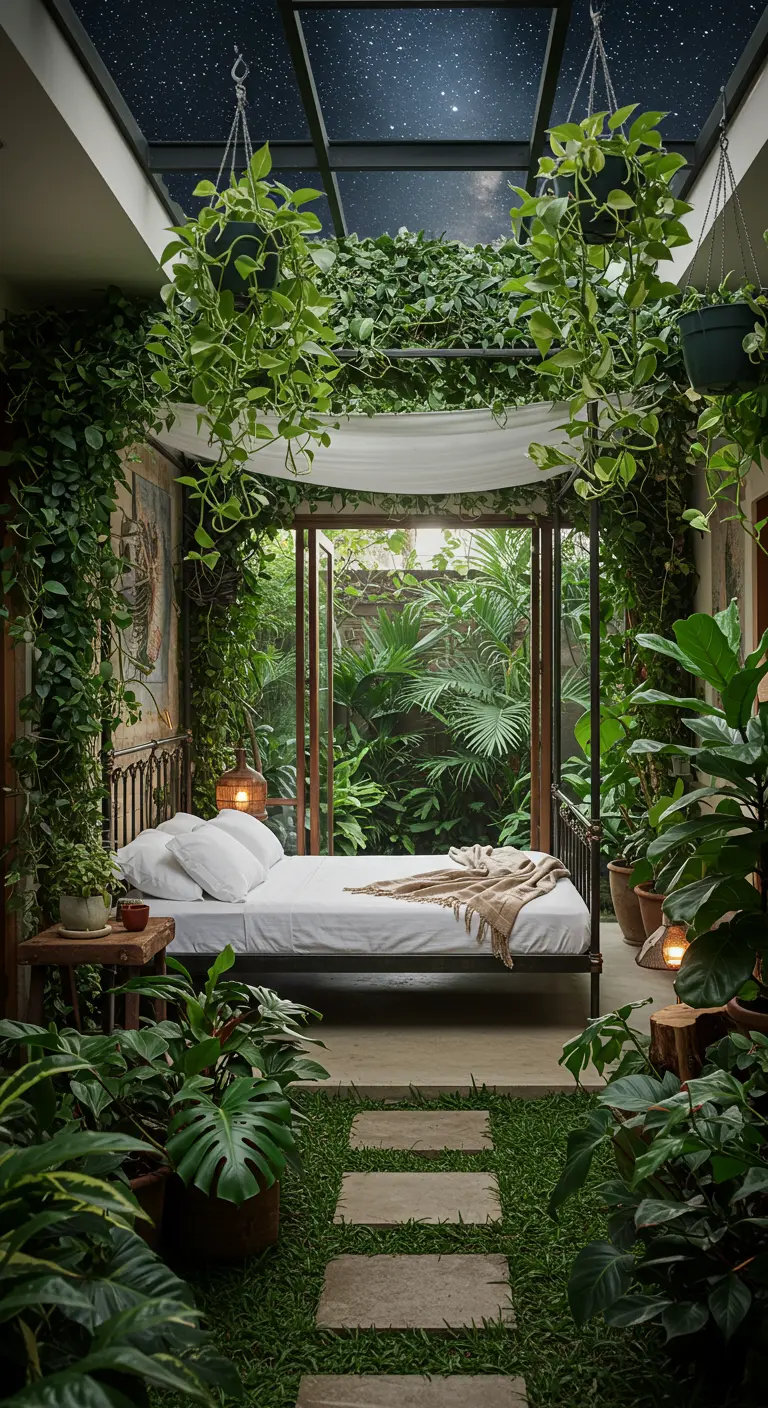
Transform your bedroom into a lush, green sanctuary by utilizing vertical space for your plants.
Climbing plants on the walls and hanging baskets create a jungle-like canopy that draws the eye upward, making the room feel taller and more immersive.
To achieve this, install a simple wall trellis for a climbing plant like pothos or ivy, and hang a variety of other plants at different heights from the ceiling.
This technique can make even a small room feel like a private botanical escape.
17. Carve Out a Dedicated Space for Stillness and Meditation
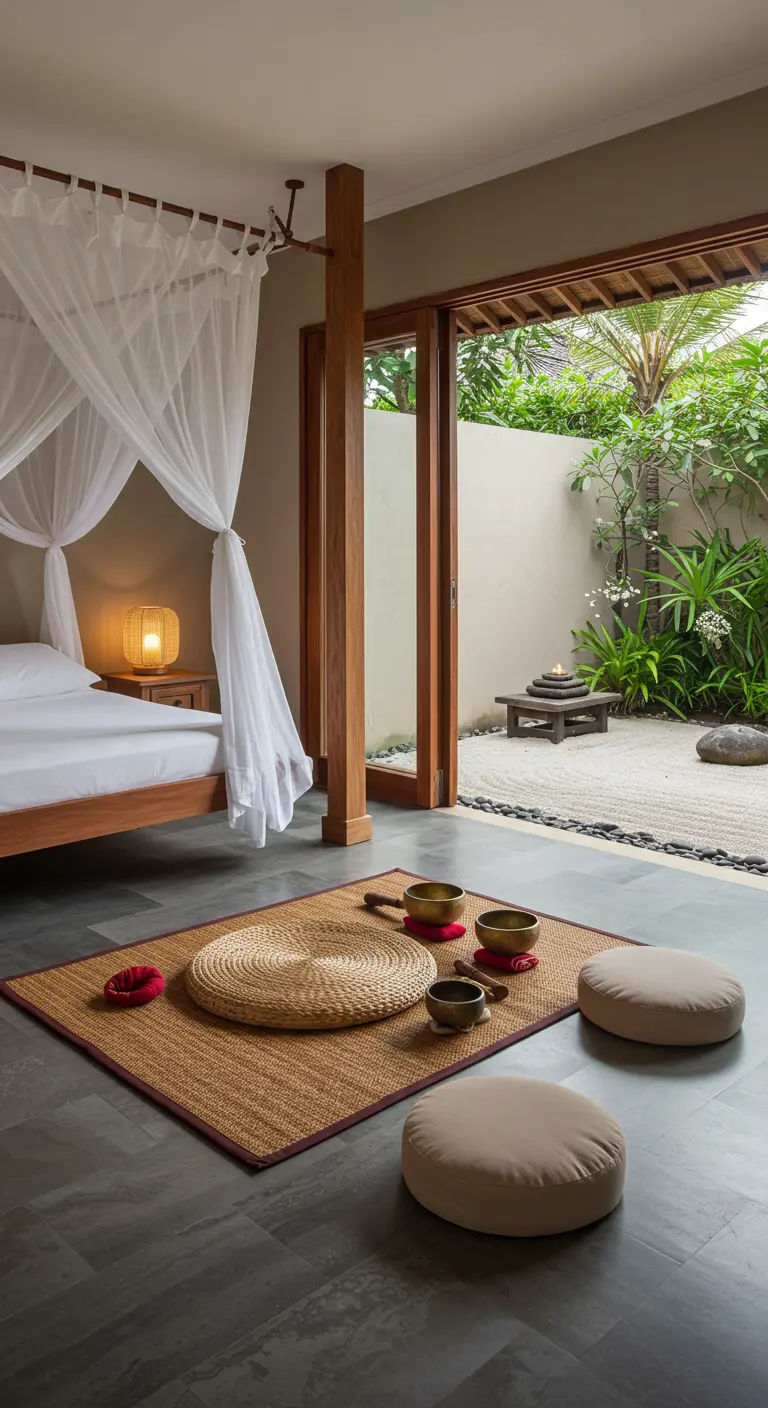
Designate a specific corner of your room for mindfulness and quiet reflection.
It doesn’t need to be large—just intentional.
A simple woven mat, a few floor cushions, and perhaps a small table for tea or singing bowls is all that’s required to create a meditation space.
Placing this spot near a window or a view of nature enhances its tranquil quality and provides a visual cue to pause and recenter.
18. Create an Outdoor Room Using a Simple Canopy

Extend your living space into the garden by creating a true “outdoor room.”
A simple post-and-beam structure with a thatched roof and a fabric canopy clearly defines this sleeping area as a distinct, intentional space.
It offers a feeling of shelter and intimacy while remaining completely open to the fresh air and surrounding nature.
Create a similar effect on a patio with a freestanding pergola, a large cantilever umbrella, or four posts draped with weather-resistant fabric.
19. Unify Adjoining Spaces with a Consistent Palette
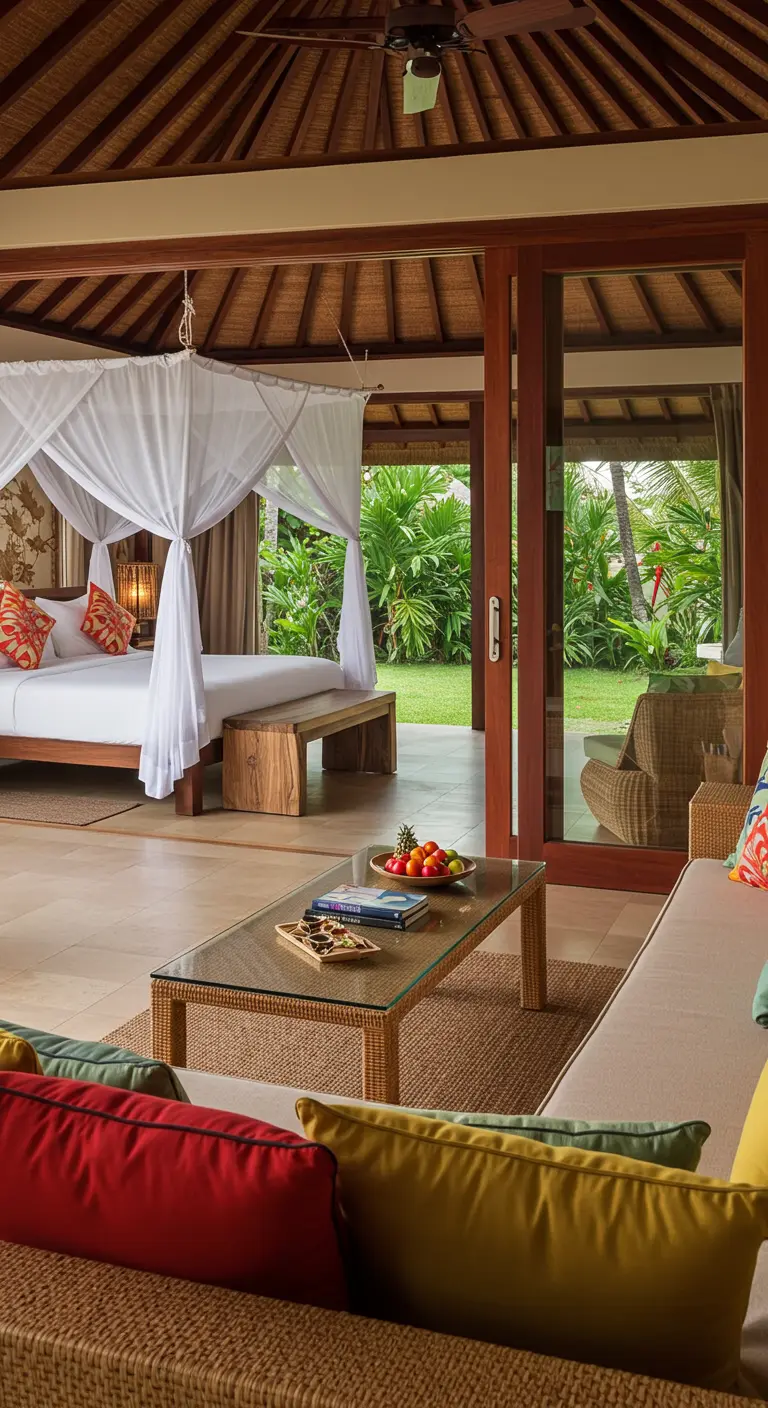
In a primary suite or studio apartment, create a cohesive and flowing feel by using the same core materials throughout different zones.
Here, the warm wood of the ceiling and furniture, the woven texture of the sofa and rug, and the neutral tile floors appear in both the living and sleeping areas.
This deliberate repetition ensures the entire space feels unified and harmonious.
You can then introduce splashes of color with pillows or art to add personality without disrupting the visual flow.
20. Juxtapose Ornate Detail with Natural Serenity

Create a stunning design moment by juxtaposing an ornate, luxurious interior with the calm simplicity of a natural view.
The incredible gold-gilt detail of this bed frame creates a rich, palatial feeling inside, while the arched doorway perfectly frames the tranquil stone fountain and garden.
This powerful contrast between human artistry and natural beauty makes both elements feel more special.
You can achieve a similar effect by pairing an antique mirror or a velvet headboard with a simple, clean view.
21. Transform Your Doorway into a Living Portrait

Think of your doorways and windows not just as openings, but as frames for the living art outside.
By pulling back the curtains completely and keeping the immediate foreground uncluttered, the distant view becomes the undisputed focal point of the room.
The symmetrical placement of the nightstands and lamps reinforces this intentional framing, guiding the eye directly toward the scenery.
This powerful design principle works for any view, whether it’s a cityscape, a garden, or a distant temple.
22. Embrace the Soulful Beauty of Raw Finishes
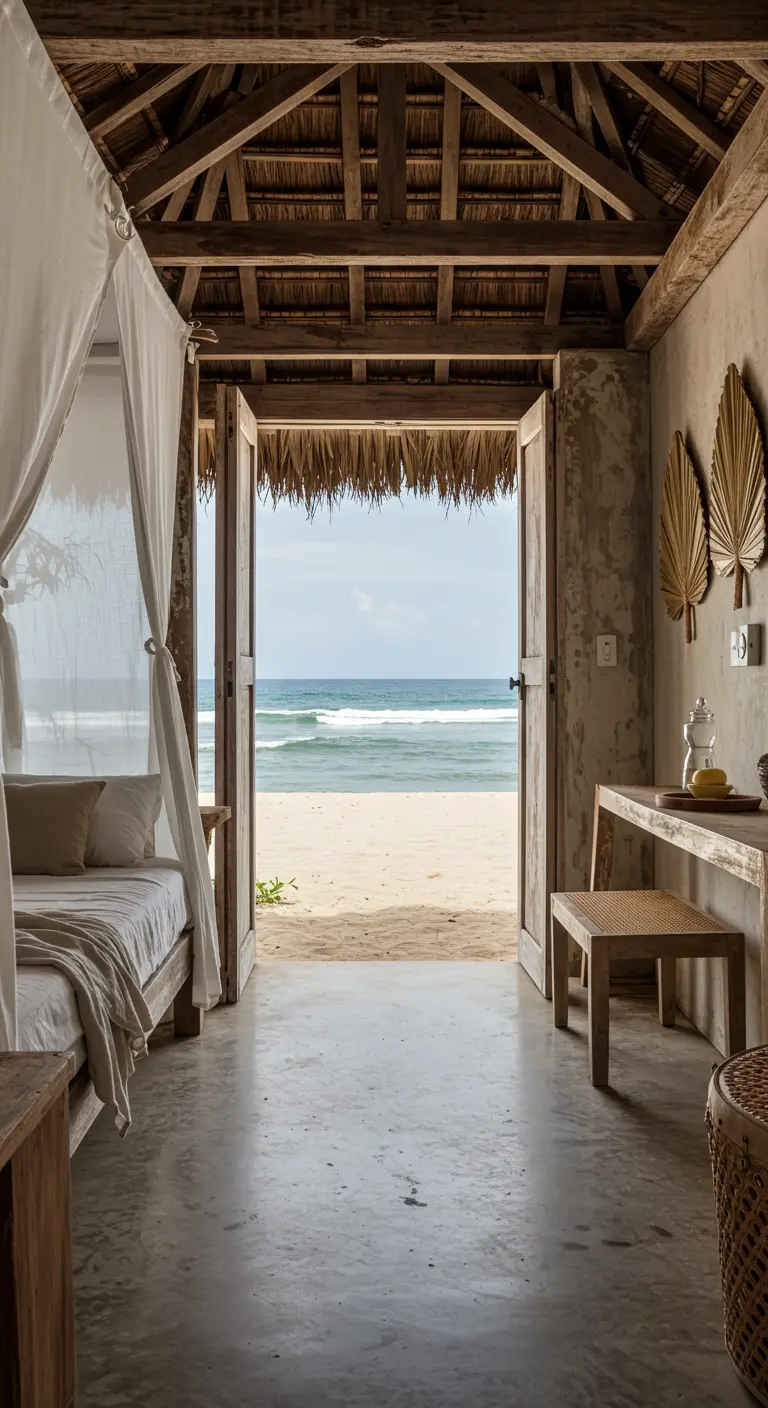
Achieve an effortless, authentic look by choosing materials that celebrate their inherent texture and imperfection.
The slightly uneven plaster walls, the raw concrete floor, and the weathered wood furniture create a space that feels honest, tactile, and lived-in.
This wabi-sabi approach finds beauty in natural simplicity, making it the perfect, humble frame for a view of the untamed ocean.
It’s a reminder that true luxury often lies in what is most natural.
23. Add Graphic Definition with Black Metal Frames
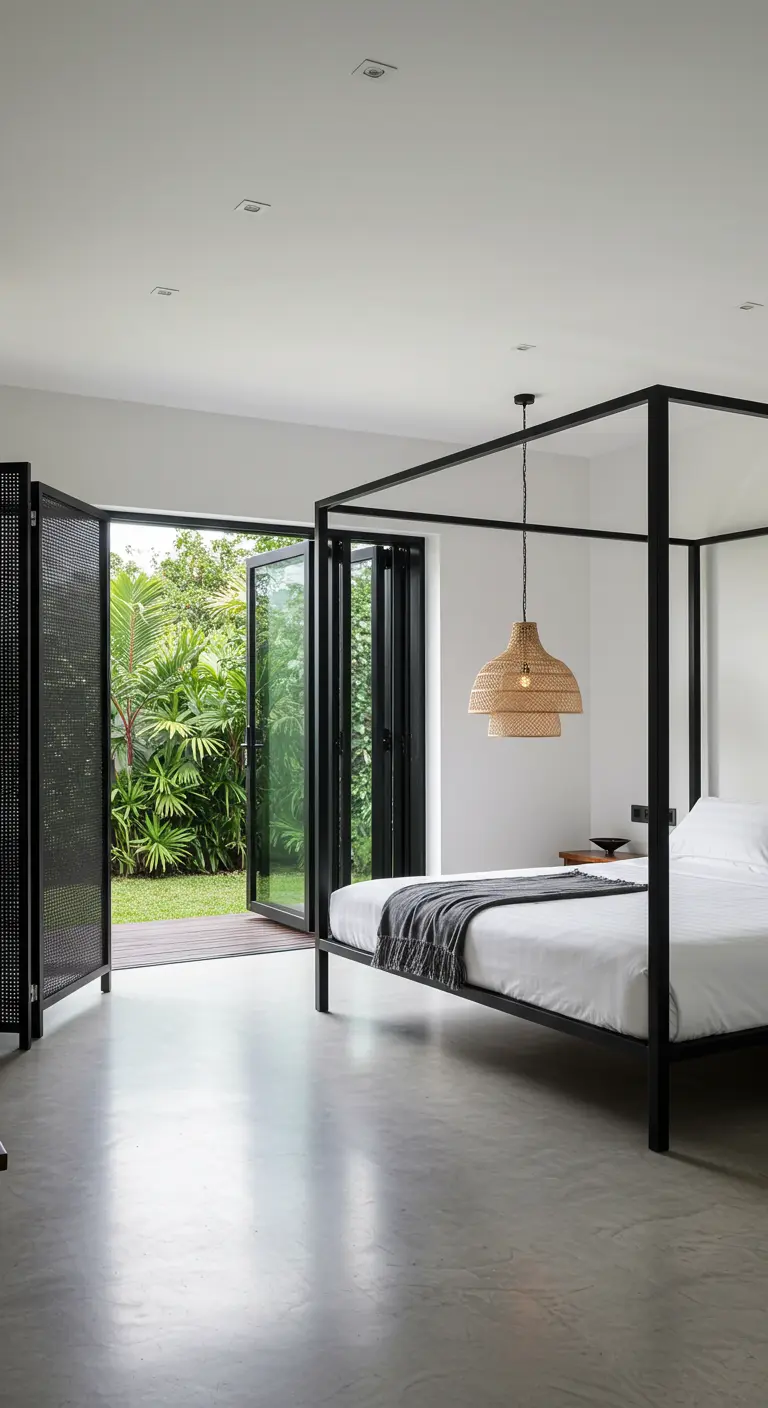
Introduce clean, graphic lines into a soft, minimalist space by using black metal as a key design element.
The thin frame of the canopy bed and the bold lines of the bi-fold doors provide a sharp, modern contrast to the lush greenery outside and the organic shape of the woven pendant light.
This creates definition and structure without adding heavy visual weight.
This technique works especially well in monochromatic or neutral schemes to prevent them from feeling flat or undefined.
